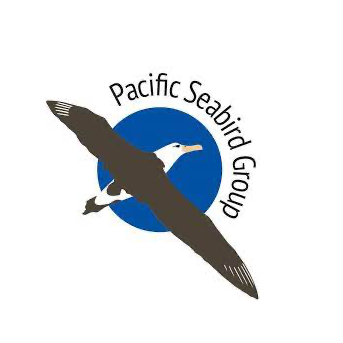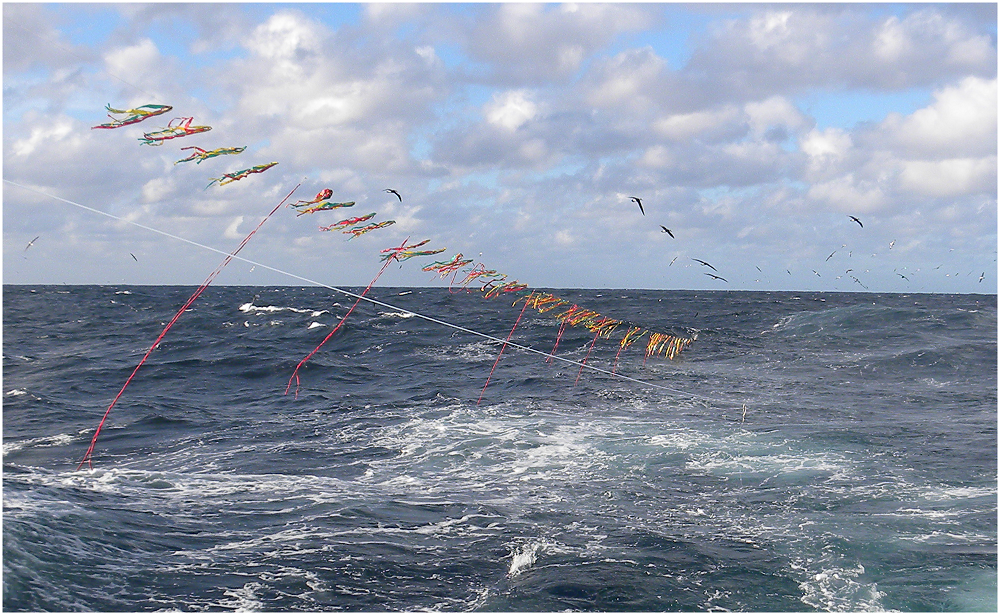
At ACAP’s most recent meetings, held in Edinburgh, Scotland, UK in May, its Population and Conservation Status Working Group (PaCSWG) considered an information paper (PaCSWG 7 Inf 05) submitted by the Mouse-Free Marion (MFM) Project and co-written by Dr Azwianewi Makhado (South African Department of Forestry, Fisheries and the Environment, DFFE) and Dr Anton Wolfaardt (MFM Project Manager). Their paper sets out the background and need for the project that aims to eradicate House Mice on Marion Island and reports on its current status. It ends by inviting the PaCSWG, ACAP and ACAP Parties “to follow our progress, and endorse and support the MFM Project which aims to achieve a more favourable conservation status for Marion Island and its globally important seabirds, including eight ACAP-listed species”. Following discussion, the PaCSWG7 recognised that this is a key project at a major global breeding site and urged all who could support the work to do so. The PaCSWG then recommended that the ACAP Advisory Committee endorse and support the MFM Project.
The 13th Meeting of the ACAP Advisory Committee (AC13) the following week heard a presentation of the PaCSWG report (AC13 Doc 09) from its Convenors that inter alia drew attention to its recommendation on the MFM Project. Following discussion among the ten Parties present, AC13 agreed to endorse and encourage support for the MFM Project, reiterating its importance (click here).

Delegates attending the Thirteenth Meeting of the ACAP Advisory Committee outside Queen Elizabeth House, Edinburgh, Scotland, photograph by Bree Forrer
The international support received from ACAP means that all six nations that hold breeding populations of one or more of the eight ACAP-listed species of albatrosses and petrels that breed on Marion Island have endorsed the MFM Project. These are Argentina, Australia, France, Chile, New Zealand and the United Kingdom. Endorsement by these Parties joins government support for the project within South Africa, recently confirmed by Ms Barbara Creecy, Minister of the Department of Forestry, Fisheries and the Environment in her budget speech (click here).
Dr Azwianewi Makhado (DFFE and South Africa’s National Contact Point for the Agreement) writes: “South Africa appreciates the support and endorsement of the progress coming from ACAP’s Advisory Committee at its Thirteenth Meeting held in May. It also appreciates the effort being made by the MFM Project to eradicate mice on Marion Island. The country will continue to provide support for this important project to help conserve the albatross and petrel species that breed on the island.”
Dr Sue Tonin, MFM’s recently appointed Assistant Project Manager, also expresses her thanks: “ACAP’s welcome support of the eradication of House Mice from Marion Island reflects an international understanding of the effectiveness of this approach for protecting vulnerable procellariforms breeding on the world’s islands. The Mouse-Free Marion Project Team is reliant on the pioneering nations, organizations and individuals who are continually refining the techniques we will be using in this operation, and on the dedicated support of researchers and policymakers.”

Non-breeding Wandering Albatrosses “gam” on Marion Island, photograph by Alexis Osborne, poster design by Michelle Risi
The international and national endorsements received by the MFM Project are an encouragement to the project’s team and its many supporters and funders in South Africa and around the world to intensify their efforts to ensure the end of Marion’s mice. On a personal note I have visited Marion Island no less than 31 times over a 40-year career as a marine ornithologist, the last time in 2014. I continue to feel a passion for the island and am pleased I can contribute to its conservation as the MFM Project’s voluntary News Correspondent.
With thanks to Robert Crawford, who represented South Africa at the ACAP meetings in Scotland.
References:
Agreement on the Conservation of Albatrosses and Petrels 2023. Report of the Thirteenth Meeting of the Advisory Committee, Edinburgh, United Kingdom, 22-26 May. 68 pp.
Makhado, A. & Wolfaardt, A. 2023. The Mouse-Free Marion Project. Seventh Meeting of the Population and Conservation Status Working Group, Edinburgh, United Kingdom, 18 - 19 May 2023. PaCSWG7 Inf 05. 5 pp.
Population and Conservation Status Working Group 2023. Report of the Population and Conservation Status Working Group. Thirteenth Meeting of the Advisory Committee Edinburgh, United Kingdom, 22 – 26 May 2023. AC13 Doc 09. 43 pp.
John Cooper, Emeritus Information Officer, Agreement on the Conservation of Albatrosses and Petrels, 04 July 2023


 English
English  Français
Français  Español
Español 


 A Northern Royal Albatross in flight over the ocean; photograph by Oscar Thomas. The new treaty on the conservation and sustainable use of marine biological diversity of areas beyond national jurisdiction (BBNJ) could be significant for the conservation of albatrosses and petrels.
A Northern Royal Albatross in flight over the ocean; photograph by Oscar Thomas. The new treaty on the conservation and sustainable use of marine biological diversity of areas beyond national jurisdiction (BBNJ) could be significant for the conservation of albatrosses and petrels. Bird-scaring lines (BSL) (pictured) are one of the mitigation measures implemented by New Zealand's squid trawl fishery. Photograph by Domingo Jimenez
Bird-scaring lines (BSL) (pictured) are one of the mitigation measures implemented by New Zealand's squid trawl fishery. Photograph by Domingo Jimenez

